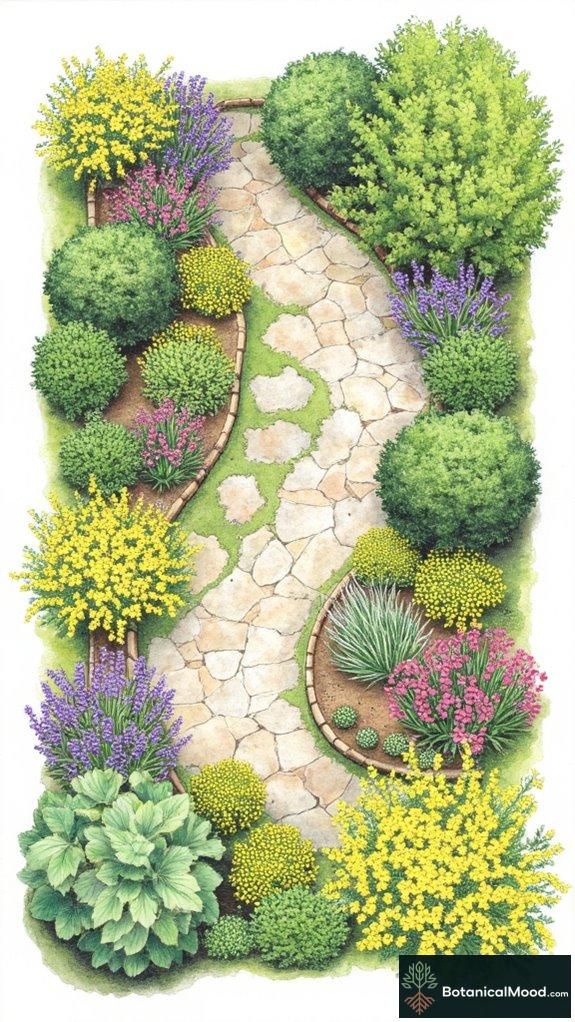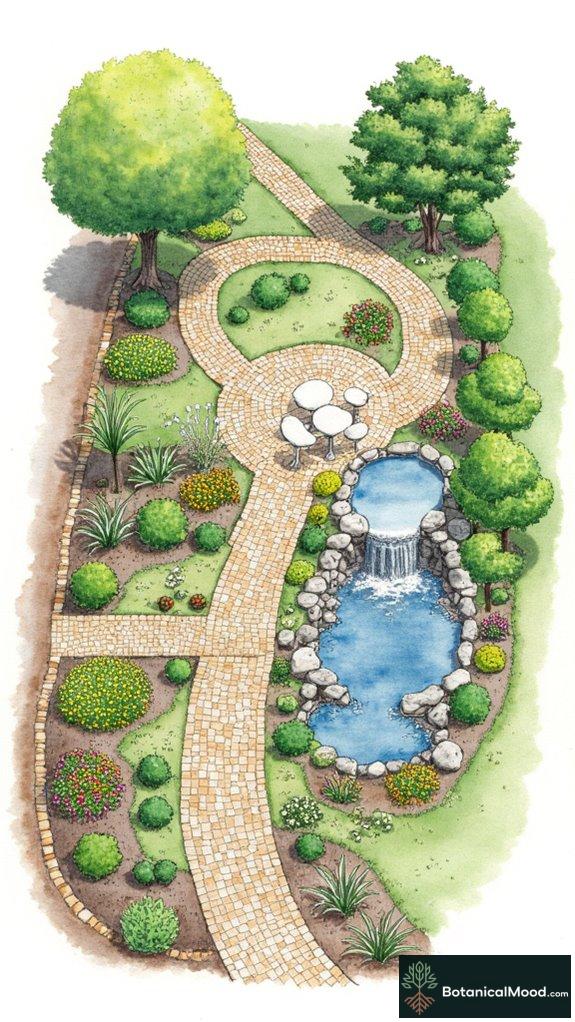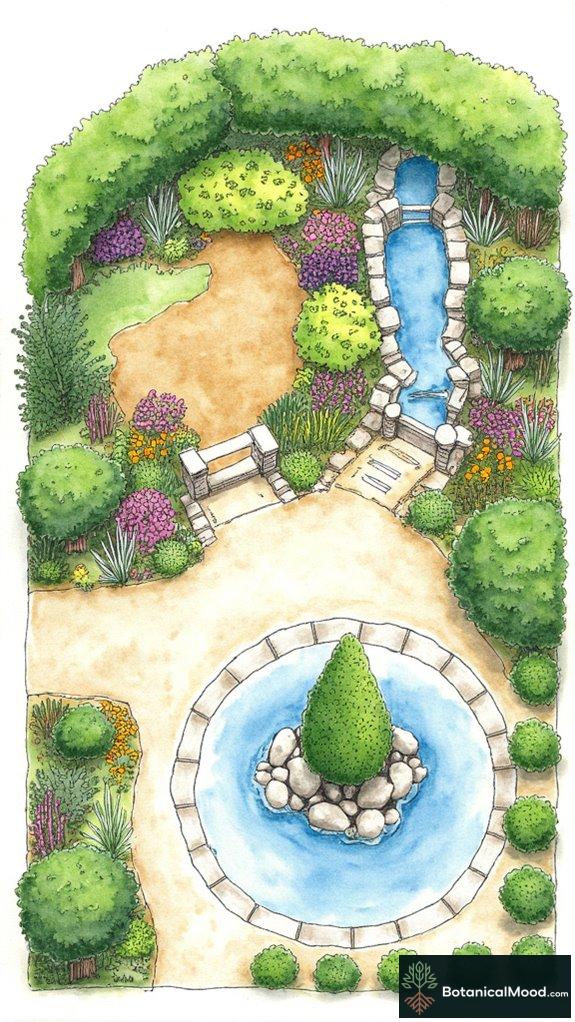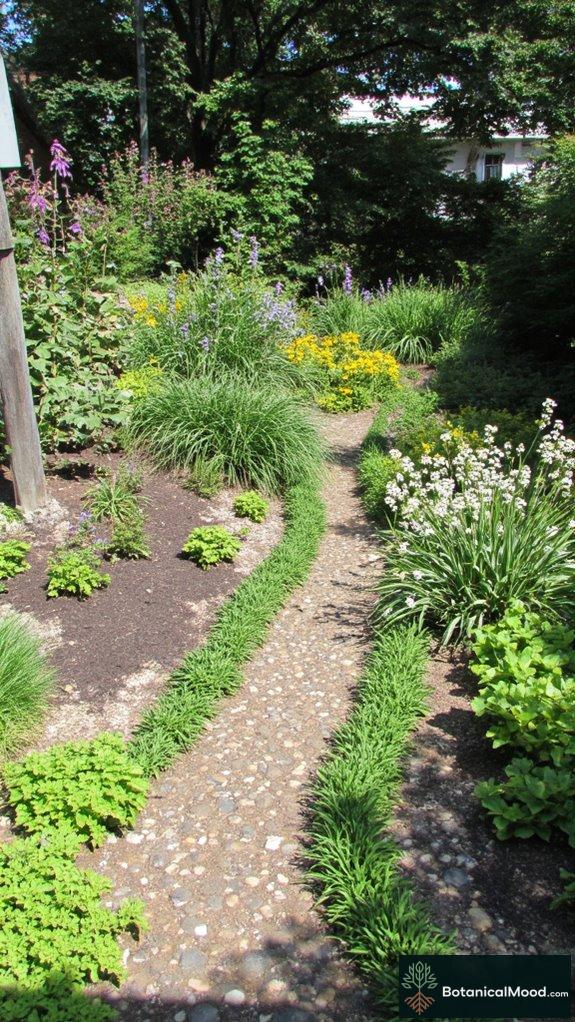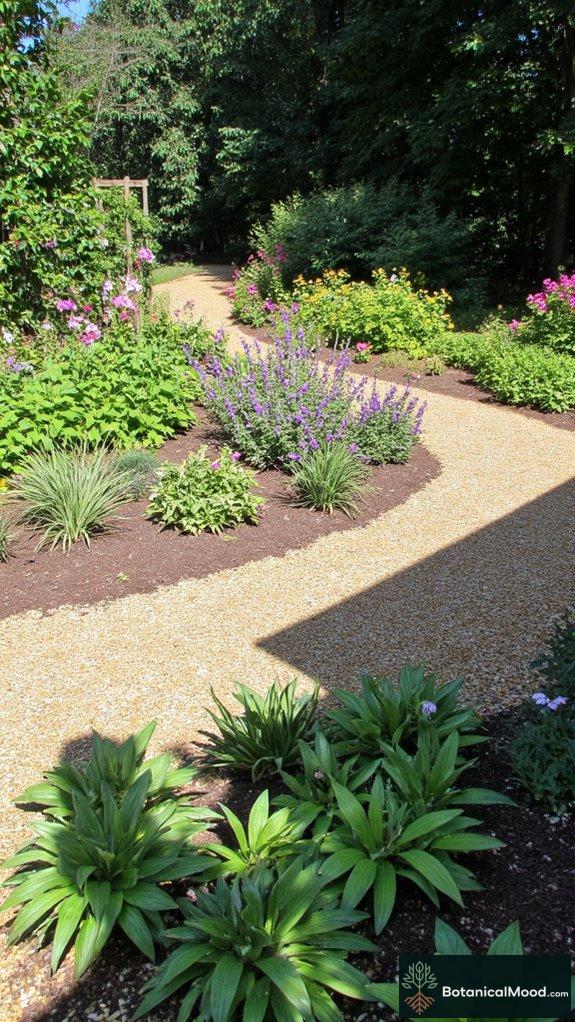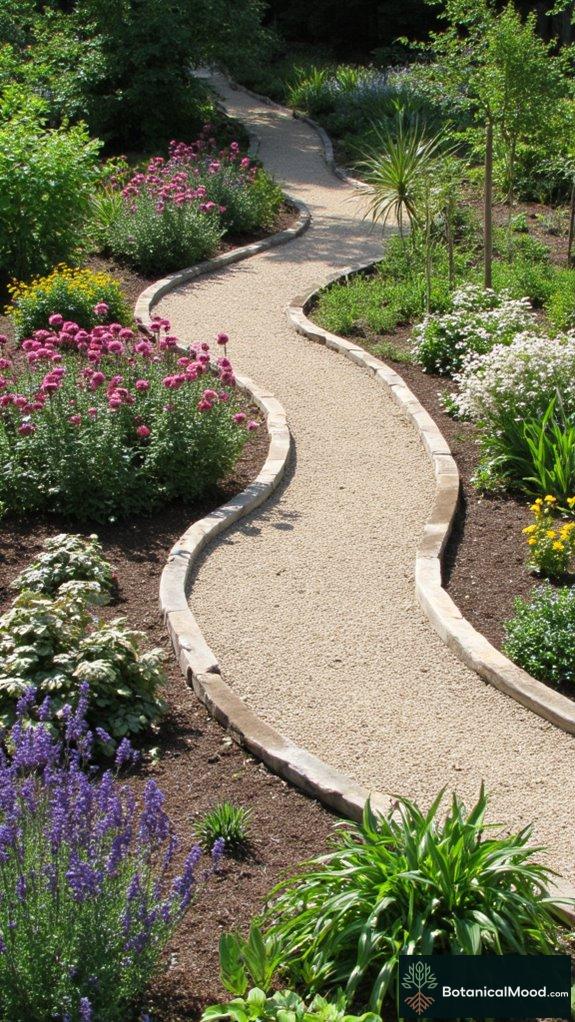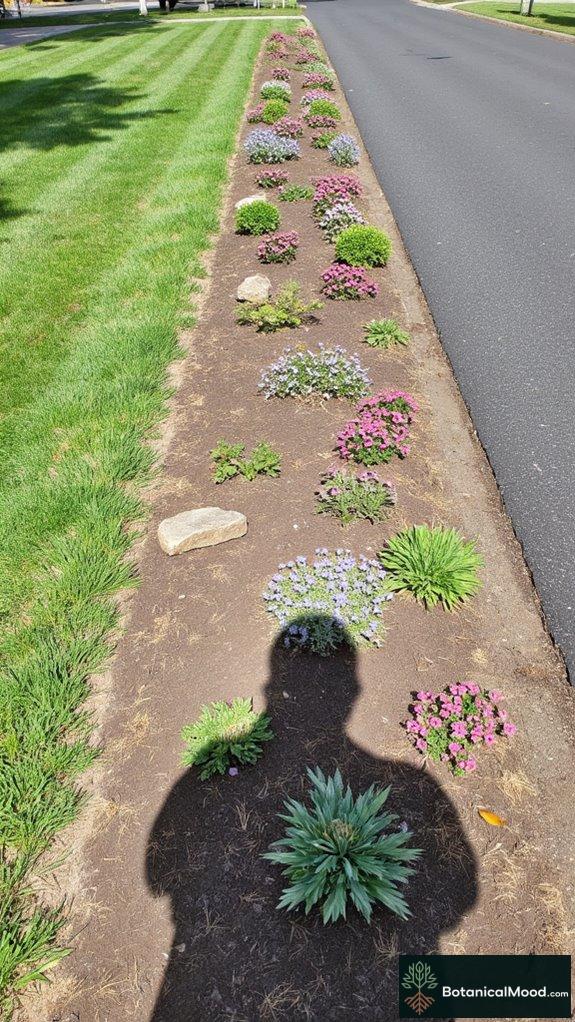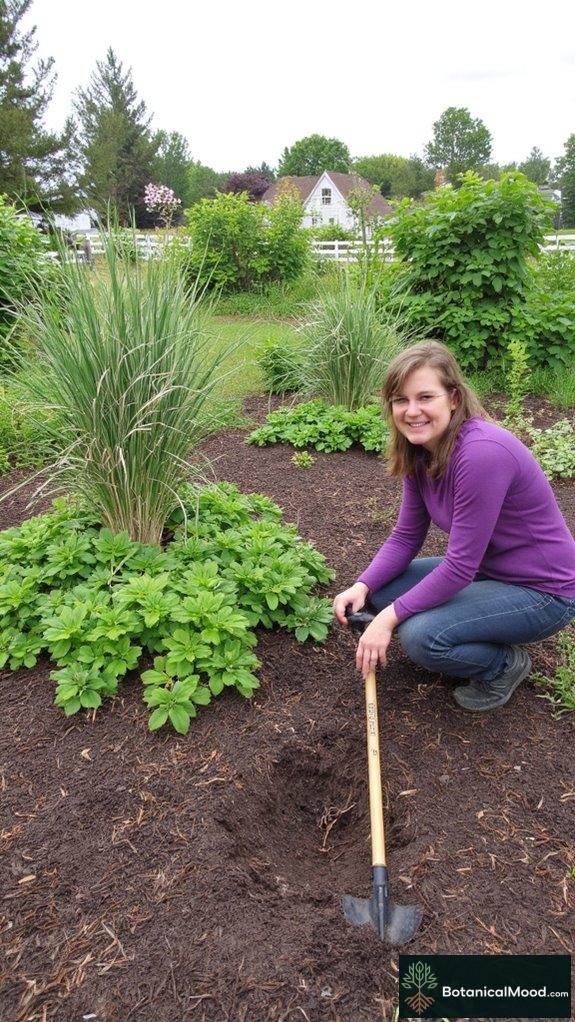Ever thought about transforming your backyard into a tropical paradise? Well, I did—granted, the Ceiba pentandra I planted last year now mocks me with its towering height. But hey, you live and learn!
I love stacking plants like nature’s own version of Jenga. Native Heliconia spp. add a pop of color, and I swear they have personalities!
Mulching with organic materials feels sustainable, although it’s a messy affair. Think of it as nature’s confetti for soil health and moisture.
And rainwater harvesting? It’s basically like giving Mother Nature a big thumbs up!
Honestly, every bit of effort to create these spaces makes my heart sing. Who’s with me on this wild garden journey?
Designing a Garden Sanctuary: A Personal Tale of Triumph
Last summer, I embarked on an ambitious garden project—turning my boring patch into a lush sanctuary. I opted for a variety of native plants because, let’s face it, who needs invasive weeds crashing the party?
The real joy came when my daughter and I built a calming meditation corner, complete with ferns and aromatic herbs. And every time a hummingbird visits, it’s like nature’s applause for our hard work!
This blend of biodiversity not only enhanced our space but also taught us the importance of sustainability in our design choices. I mean, who can resist the beauty of thriving ecosystems right outside their door?
Quick Takeaways
- Create multilayered garden structures with towering trees and understory plants to emulate rainforest ecosystems and support biodiversity.
- Choose native tropical plants for your climate to enhance sustainability and support local wildlife.
- Implement water conservation techniques like drip irrigation and water harvesting to optimize resource use in your garden.
- Use organic mulches and local soil amendments to promote moisture retention and encourage healthy soil ecosystems.
- Incorporate eco-friendly materials and practices in garden design to ensure environmental stability and reduce ecological impact.
Emulating Rainforest Layers in Garden Design

When I think about emulating the rich layers of a rainforest in garden design, I envision creating a vibrant tapestry of greenery that not only captivates the eye but also serves as a sanctuary for diverse flora and fauna.
Emulating rainforest layers in garden design creates a captivating, biodiversity-rich sanctuary that inspires harmony with nature.
By incorporating canopy layers with towering trees like Ceiba pentandra, I can establish a stunning overhead presence.
Beneath, the understory plants, such as Heliconia spp. and Alpinia zerumbet, add depth and texture, enriching the visual experience.
This layered approach fosters biodiversity, creating habitats that echo the rainforest’s ecosystem.
Incorporating regenerative planting techniques allows for a sustainable garden that thrives and supports local wildlife.
Each element contributes to a cohesive and inviting garden that inspires a sense of control and harmony within nature.
Choosing the Right Tropical Plants for Your Region

How do you determine the best tropical plants for your specific region?
Start by evaluating climate adaptability, as choosing plants that thrive in your area’s temperature, humidity, and rainfall is vital.
For instance, if you’re in a coastal region, consider native species like the beautiful Bougainvillea (Bougainvillea spp.), which flourishes in salty conditions.
Furthermore, the vibrant Heliconia (Heliconia spp.) can be a stunning choice for tropical aesthetics. Incorporating rare and exotic species can also elevate the uniqueness of your garden design.
By prioritizing these climate-adaptable, native options, you’re not only ensuring a flourishing garden, but you’re also supporting local ecosystems.
I’ve created Botanical Mood to help guide you in making informed choices, empowering you to craft your perfect tropical paradise.
The Importance of Soil and Mulching Techniques

Soil quality plays an essential role in the success of your tropical garden, significantly influencing plant growth and health.
Maintaining ideal soil health (e.g., rich in nutrients and microorganisms) is important for your plants like Heliconia spp. and Plumeria spp.
Incorporating mulching techniques elevates this process, offering significant benefits such as moisture retention, temperature regulation, and weed suppression.
Materials like bamboo chips or coconut coir not only enrich the soil but also foster biodiversity.
I find that a well-chosen mulch complements the garden’s aesthetic, creating a lush environment.
Water Conservation Strategies in Tropical Gardening

In a tropical garden, where vibrant flora like Hibiscus rosa-sinensis and Bougainvillea spp. thrives, effective water conservation strategies become essential to guarantee that this lush paradise remains sustainable and vibrant.
Implementing drip irrigation systems allows for precise water delivery, minimizing waste while ensuring plants receive adequate moisture.
Meanwhile, employing organic mulches, like shredded coconut husk or leaf litter, considerably enhances moisture retention within the soil, reducing the frequency of watering.
Promoting Biodiversity Through Plant Selection

While understanding the importance of maintaining a rich ecosystem, I often find that promoting biodiversity through thoughtful plant selection is one of the most rewarding aspects of tropical garden design.
Incorporating native species, like the vibrant Heliconia spp. and lush Calathea spp., greatly aids in habitat preservation, creating sanctuaries for local wildlife.
These plants adapt seamlessly to their surroundings, enhancing soil health and moisture retention, while fostering a resilient ecosystem.
By prioritizing local flora, I guarantee my garden not only thrives aesthetically but also contributes substantively to ecological stability.
Prioritizing local flora ensures my garden thrives in beauty while bolstering ecological stability.
This commitment to biodiversity fuels my passion for sustainable living and garden design.
Implementing Agroforestry Practices in Your Garden

Understanding how to weave agroforestry practices into my garden not only enhances its aesthetic appeal but also serves multiple ecological purposes. By implementing permaculture principles, I create a harmonious environment that supports biodiversity. One of my favorite techniques is developing fruit tree guilds, which synergistically support each other.
| Plant Type | Companion Plants | Benefits |
|---|---|---|
| Fruit Trees (Prunus avium) | Nitrogen-fixing plants (Glycine max) | Enhances soil fertility |
| Herbs (Thymus vulgaris) | Pollinator-friendly flowers (Echinacea purpurea) | Attracts beneficial insects |
| Ground Covers (Ceratonia siliqua) | Dynamic accumulators (Borage officinalis) | Improves water retention |
The Role of Companion Planting in Sustainability

Companion planting goes beyond simply pairing plants together; it’s about creating a vibrant ecosystem that promotes sustainability within our gardens.
By strategically selecting plant partners, we can enhance pest management, guarantee efficient nutrient cycling, and boost biodiversity.
- Enhances soil structure: Deep-rooted species improve aeration
- Reduces pest populations: Borage (Borago officinalis) attracts beneficial insects
- Improves yield: Beans (Phaseolus vulgaris) fix nitrogen for nearby crops
- Conserves water: Ground covers prevent evaporation
- Promotes health: Companion plants can improve each other’s growth
Incorporating these principles fosters a resilient garden, echoing the ethos of my website, Botanical Mood.
Utilizing Natural Water Management Systems

When you consider the complex balance of nature, it’s clear that water management plays an essential role in sustaining healthy gardens. Effective rainwater harvesting and water retention techniques not only minimize waste but also promote healthy plant ecosystems.
| Technique | Benefits |
|---|---|
| Rain Garden (Rudbeckia hirta) | Filters runoff, enhances biodiversity |
| Swales (Atriplex spp.) | Reduces erosion, facilitates absorption |
| Rain Barrels | Conserves water, promotes sustainability |
Success Stories: Notable Designers and Their Approaches

In the vibrant tapestry of tropical garden design, notable designers have emerged with innovative approaches that harmonize aesthetics and sustainability.
Their design philosophies often draw from cultural influences, blending local traditions with ecological practices.
- Emphasis on native plants, like Heliconia spp.
- Water conservation through bio-swales and rain gardens
- Integration of permaculture principles for soil health
- Use of reclaimed materials for structures and paths
- Designing for biodiversity, inviting pollinators and wildlife
Resources for Creating Your Tropical Rainforest Garden

Creating your tropical rainforest garden can be an exhilarating journey, filled with the lush colors and rich textures that such environments offer.
To kickstart your project, gather essential garden tools like trowels, spades, and pruning shears. These will empower you to shape and maintain your space effectively.
Incorporating organic fertilizers like compost (humus) enriches your soil, creating a thriving ecosystem. Brands such as Dr. Earth provide excellent organic options that promote healthy growth.
As you cultivate your garden, keep in mind to embrace native plants like Heliconia (Heliconia spp.) for a vibrant display that stays true to the rainforest theme.
Eco-friendly Tropical Garden Features

To cultivate an eco-friendly tropical garden, one must thoughtfully integrate sustainable design features that not only enhance beauty but also support biodiversity and environmental health.
- Favor native tropical plants for reduced water needs.
- Implement rainwater harvesting to optimize irrigation.
- Use sustainable materials like reclaimed wood or stone in hardscaping.
- Employ organic fertilizers to enhance soil health naturally.
- Design multilayered plantings that mimic rainforest structures, promoting ecological balance.
Rainforest-Inspired Sustainable Garden Layout

Building upon the eco-friendly features of a tropical garden, envisioning a rainforest-inspired sustainable garden layout invites a celebration of nature’s complexity and resilience.
To mirror rainforest structures, I organize plants in layers and blooms that support rainforest wildlife, allowing natural interactions. I’ve utilized hydrozoning to guarantee efficient water use, and by incorporating compost, I promote healthy soil ecosystems. Through dense plantings, I enhance habitat complexity while providing what local fauna need. This layout balances aesthetics with sustainable practices, creating a vibrant, self-sustaining world.
| Layer | Plant Type | Purpose |
|---|---|---|
| Canopy | Tall trees (e.g. Ceiba pentandra) | Shade for understory |
| Understory | Shade plants (e.g. Alpinia zerumbet) | Wildlife habitat |
| Shrub | Flowering plants (e.g. Heliconia) | Pollinator attraction |
| Groundcover | Low plants (e.g. Fittonia) | Weeds suppression |
| Root Layer | Deep roots (e.g. Banana) | Nutrient cycling |
Garden Visionary Behind Design

The garden visionary, Johnson, hails from California, USA. A lifelong nature enthusiast, she developed a passion for tropical gardens during her travels through Southeast Asia, inspiring her dream to create a lush retreat at home.
To achieve her garden design, Johnson collaborated with local horticulturists and land planners, meticulously planning her vision. The process involved selecting native tropical plants, sketching layouts, and considering factors like sunlight and soil type to establish a thriving ecosystem.
For the creation of her tropical garden, Johnson used high-quality tools from brands like Fiskars and DeWit.
Accessories such as decorative planters from Bloem and irrigation systems from Rain Bird were essential, ensuring ideal growth for the selected flora, including hibiscus and plumeria.
Urban Container Garden Solutions

Urban container gardens offer a creative solution for those of us maneuvering limited green space in bustling city environments, presenting an opportunity to infuse life and color into otherwise stark concrete surroundings.
By incorporating urban wildlife and focusing on container aesthetics, you can create vibrant ecosystems. Here are some strategies to enhance your urban containers:
- Utilize native plants (e.g., Echinacea purpurea) for resilience and beauty.
- Implement rainwater harvesting for efficient irrigation.
- Opt for multilevel designs to maximize small spaces.
- Incorporate berry-producing plants for local birds.
- Practice companion planting to promote biodiversity.
In developing these gardens, I’ve found a way to harmonize beauty with sustainable practices.
Summary
I cultivate my tropical garden by embracing rainforest elements and focusing on sustainability. Using native plants like Bougainvillea, I create a vibrant, eco-friendly space that supports local ecosystems and mimics nature’s beauty. Each layer of greenery brings me closer to the richness of life.
I’d love to hear about your own garden experiences. What techniques do you use to promote sustainability and biodiversity in your space?
Feel free to share pictures of your garden and the design process behind it. I’m eager to see how you’ve created your own green haven!
References
- https://gardenshackwhitsundays.com.au/rainforest-inspired-garden-design-in-the-whitsundays-how-to-create-a-lush-tropical-oasis/
- https://www.aco.co.uk/media/v3/7/64AFDB92_6C87.pdf
- https://attra.ncat.org/publication/community-forest-gardens-case-studies/
- https://www.monrovia.com/be-inspired/tropical-garden-design-ideas.html
- https://pacifichorticulture.org/articles/the-allure-of-forest-gardens/
- https://www.nwf.org/Native-Plant-Habitats/Impact/Sustainable-Gardening-Trends
- https://www.nature.com/articles/s44304-024-00012-z
- https://pmc.ncbi.nlm.nih.gov/articles/PMC9603381/
- https://www.youtube.com/watch?v=VWG8C0RM0Eo
- https://rhinolands.com/post/designing-tropical-gardens/
- https://www.provenwinners.com/learn/finding-right-plant/how-design-tropical-paradise-your-own-backyard
- https://phsonline.org/for-gardeners/gardeners-blog/small-tropical-garden-ideas
- https://www.gardenia.net/guide/tropical-plants-for-your-outdoor-garden
- https://www.gardendesign.com/tropical/ideas.html
- https://www.nwf.org/Native-Plant-Habitats/Plant-Native/Ecological-Landscape-Design
- https://tropicalstyleplants.com/how-to-create-your-own-jungle-landscaping-design/
- https://www.monarchgard.com/thedeepmiddle/fundamentals-of-natural-garden-design
- https://www.sgaonline.org.au/sustainable-garden-design/
- https://www.youtube.com/watch?v=8NhA6PErO-A
- https://hamiltongardens.co.nz/hamilton-gardens-visit-gardens/sustainable-garden-eco-friendly
- https://virensstudio.com/blog/3-principles-of-garden-design-the-whole-gardens-approach/
- https://thebotanicaljourney.com/blogs/the-botanical-journey/natures-canvas-fundamentals-of-forest-garden-design
- https://laidbackgardener.blog/2024/10/13/container-gardening-no-no-or-eco/
- https://sproutedgarden.com/vegetable-container-gardening/
- https://aifarming.ca/blogs/top-10-gardening-solutions-for-urban-farmers-tools-and-tips-for-success/
- https://celebrateurbanbirds.org/learn/gardening/container-gardening/
- https://wildones.org/native-plants-for-urban-balconies/
- https://smdp.com/opinion/container-gardening-101-do-not-contain-your-joy/


































